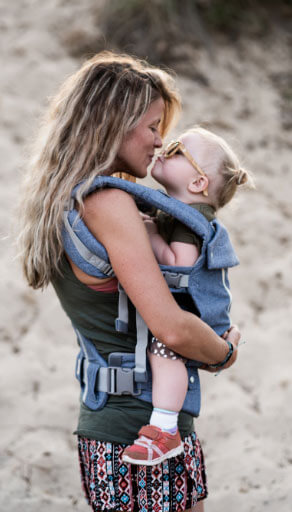Building the Foundation for Communication

As a paediatric speech pathologist and mother of 3, it never ceases to amaze me how children develop so differently in everything that they do.
Take my own children for example. The eldest one was practically born talking and to be honest hasn’t stopped since the day she was born, but she was quite happy to sit and request what she wanted until I practically forced her to crawl at one and walk at nearly two. My second born quietly observed the world around her for a good number of months before she decided to try out her voice but as soon as she found she could move she was rolling herself into all sorts of situations and being such a petite little thing, I often had to send out search and rescue to locate her from underneath couches, beds and coffee tables. My third born, well he is another story altogether I mean why bother walking when you can run everywhere especially down really steep hills where you can go “really really fast mum!” Needless to say my main goal with him is to make sure he keeps himself in one piece!

Learning to talk is one of the most important areas of a child’s development. But like everything, children will develop this in their own time. The most intensive period of speech and language development, however, happens in the first three years of the child’s life. Even though a child might not say their first word before the ages of 12-18 months, children are learning all the foundation skills for communication well before they say their first word. Foundation skills are the early communication skills that lead to the development of more complex skills such as spoken words. Think like building a house, without a solid foundation that house will come crashing down. The same goes for communication; these foundation skills are important for further and more complex language development. Below is a list of some of the most important foundation skills and some simple tips on how you can encourage the development of them.
- Eye contact: it is important your child learns to look at you and others when communicating. Babies love looking at faces and by making eye contact they learn and attend to spoken language. You can help encourage your child to make eye contact by saying their name and getting down to their eye level before talking. Make silly faces and use lots of pitch and inflection in your voice which will hold their interest.
- Joint attention: when your child is looking and maintaining attention, they then learn to develop their joint attention. That is, they learn to attend and share an activity with another person. When joint attention first develops it may only be for a short period of time. As your child grows and develop they will share attention for much longer periods of time especially if it is an activity they love. You can help encourage your child’s joint attention through play. Activities that babies and children love include blowing bubbles; reading books together; building blocks together or singing simple songs or nursery rhymes that involve actions as well as words. Peek-a-boo is a great game that babies particularly love.
- Imitation: when your child is looking and attending they then learn to develop their imitation skills. Often babies will learn to imitate or copy actions first which is the first step towards them imitating speech sounds and words. You can help encourage your child’s imitation skills through actions such as clapping and waving goodbye. Babies love to be noisy and bang things so you can encourage imitation skills through activities such as banging blocks or spoons together. When babies begin to play with sounds through cooing and babbling, you can further encourage development of their imitation skills by responding and copying the sounds they make.
- Taking turns: is essential when talking and playing with others. You can encourage development of turn taking by playing simple and quick games with your child as young children don’t like to wait too long!!! You could roll a ball or push a truck to each other, build towers of blocks together, blow bubbles together or take turns pouring water into tubs or the bath.
- Making choices: helps your child understand the power of communication. You can encourage development of choice making by choosing times through the day where you provide your child with a choice of two things. It might be a choice of what to eat or drink or a choice of playing with the bubbles or blocks. By not always anticipating what your child might need or want you have now created the need for your child to tell you. This may be through looking at the object they want; smiling when you hold up the object they want or even reaching for what they want.
And the most important thing to remember is that all babies and children learn to communicate the best when they are having fun! By playing and responding to any of their attempts at communicating then you are giving them the best start at building their foundation for successful communication.
Kath Keiper is the co-creator of three beautiful children who while driving her crazy, make her laugh everyday. Having been a paediatric speech pathologist for over 15 years, Kath has also spent her life dedicated to helping children and families. Through her career Kath has been fortunate to speak at varying events such as the World Autism Congress and Speech Pathology Australia. Being able to make a positive difference in many children and families lives has always been Kath’s highlight. Her love of helping children, making a difference and performing, have also been the driving force behind the creation of her first DVD for children “Can you sound like me?”
Visit www.chewchewchatter.com.au










